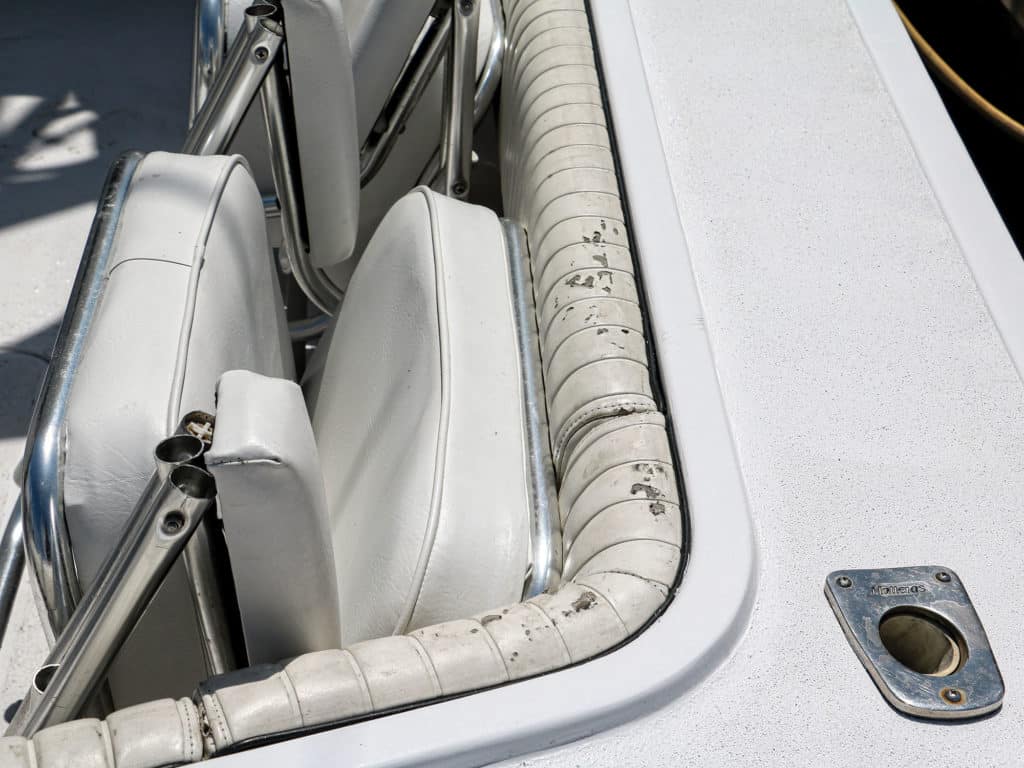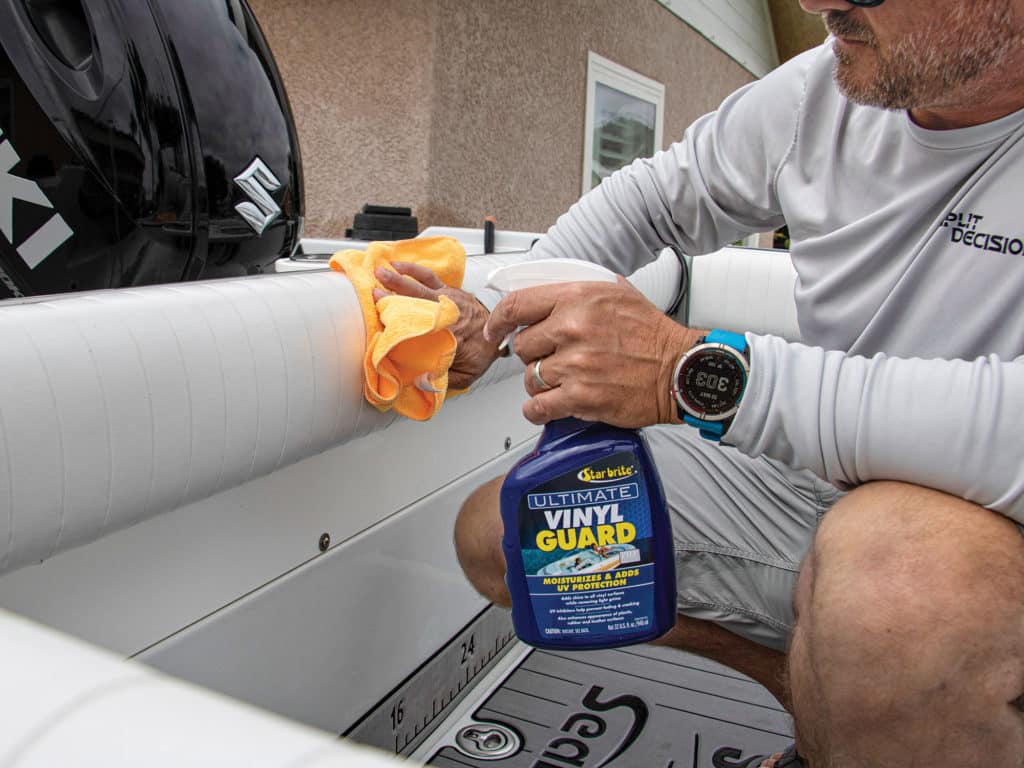
Consider the basic anatomy of a boat: exterior, interior, engine. On that level, a boat is not so different from a car—with one huge exception. Saltwater fishing boats live in a hyper-corrosive environment.
While a car owner can periodically schedule automotive upkeep projects such as washing and waxing, a saltwater-boat owner should be more vigilant. But that doesn’t always happen.
One particular area of common neglect is boat seats. “Especially for boats in saltwater, you’d want to clean the fiberglass, the decking and the upholstery after each use,” says Nick Covey, marketing manager for Llebroc Industries, which makes a wide variety of boat seats.
Covey says the main upholstery issues the company sees include rust, which can emanate from a bad staple when vinyl is not properly dried; mold or pinking (mold underneath vinyl); or stains such as ink. Other common substances such as fish blood and sunscreen come off fairly easily.
He adds that pinking has become less of a problem since the EPA set new regulations on vinyl materials. Still, mold and mildew on a surface are common. The No. 1 culprit: Leaving your seat bolster flipped up after a wash.
“Vinyl has a unique role on a boat,” says Derick Cote, Star brite’s director of sales and marketing. “Not only is it a surface that is constantly sat on—so it must remain flexible and comfortable— but it always faces the sun, so it’s getting UV rays.”
Every time salt water splashes on the vinyl surface, it leaves salt crystals that can be abrasive. A general wash removes much of the salt, but other products can help further clean, condition and protect vinyl, conceivably for the life of the vessel.
While most experts agree about the frequency of washing, they don’t always agree on all of the do’s and don’ts. For instance, some say household soaps can be used to clean upholstery. Others say substances such as Dawn or Ivory can cause yellowing, and they strip polymers such as wax and UV protectants.

Some say a soft brush is OK to use on vinyl, while others say no brushes. A soft mitt, sponge or cloth is recommended.
Three agreed-upon rules of thumb:
- Don’t use a power washer. The force of the water can damage vinyl.
- Avoid substances with high alcohol content, such as the common car-vinyl product Armor All and 409, which can dry out vinyl and lead to cracking.
- Avoid bleach or anything abrasive.
Covey says Llebroc recently partnered with the company Bling, and he recommends its products, such as Vinyl Sauce and Condition Sauce. He says that for the newer cool-touch vinyls and synthetic leathers, the Mild Soap Sauce works best.
Star brite’s Cote offers the following outline for a proper cleaning, conditioning and protecting process with its products:
- Use a proper boat soap mixed with water to remove much of the salt and dirt, followed by a product like Salt Off, which dissolves and removes crystals.
- After the wash, you might find additional dirt that needs a chelating agent, such as Ultimate Vinyl Clean, Cote says.
- A product such as Star brite’s Magic Sponge also can be used sparingly on stubborn stains. But Cote cautions that all vinyl has a wear layer, and Magic Sponge can diminish that. “It’s like a pencil eraser,” he says. “It has a little bit of abrasive.”
- To treat mildew, apply Mildew Stain Remover and let it sit. An oxidation reaction takes place that eliminates the stain. Rinse well. If you frequently see mildew stains, you can opt for Mildew Stain Blocker.
- Finally, use a PTFE polymer product like Ultimate Vinyl Guard that conditions and protects against UV rays and stains. It’s important that vinyl remains supple, particularly thinner vinyl materials that must flex.
“Conditioning is the main thing,” Covey says. “A conditioner holds the moisture in the vinyl to extend its life span. And be sure your upholstery is dry before you cover it.”
Silicone Vs. Vinyl
In the last few years, boat manufacturers such as Robalo and Chaparral have tested and implemented silicone fabrics in their boat seats. The benefits include increased stain resistance without the need for additional topcoats.
“You can see [the blood or water] bead up on it like on a freshly waxed car,” says Joe Pegg, Robalo’s regional sales director. “Silicone is naturally UV protecting; it better resists suntan-spray staining, pinking, mildew and mold.
It’s also softer and more heat-resistant, and most dirt can be removed with soap and water.”
The main downside is that silicone costs three and a half times more than vinyl.









